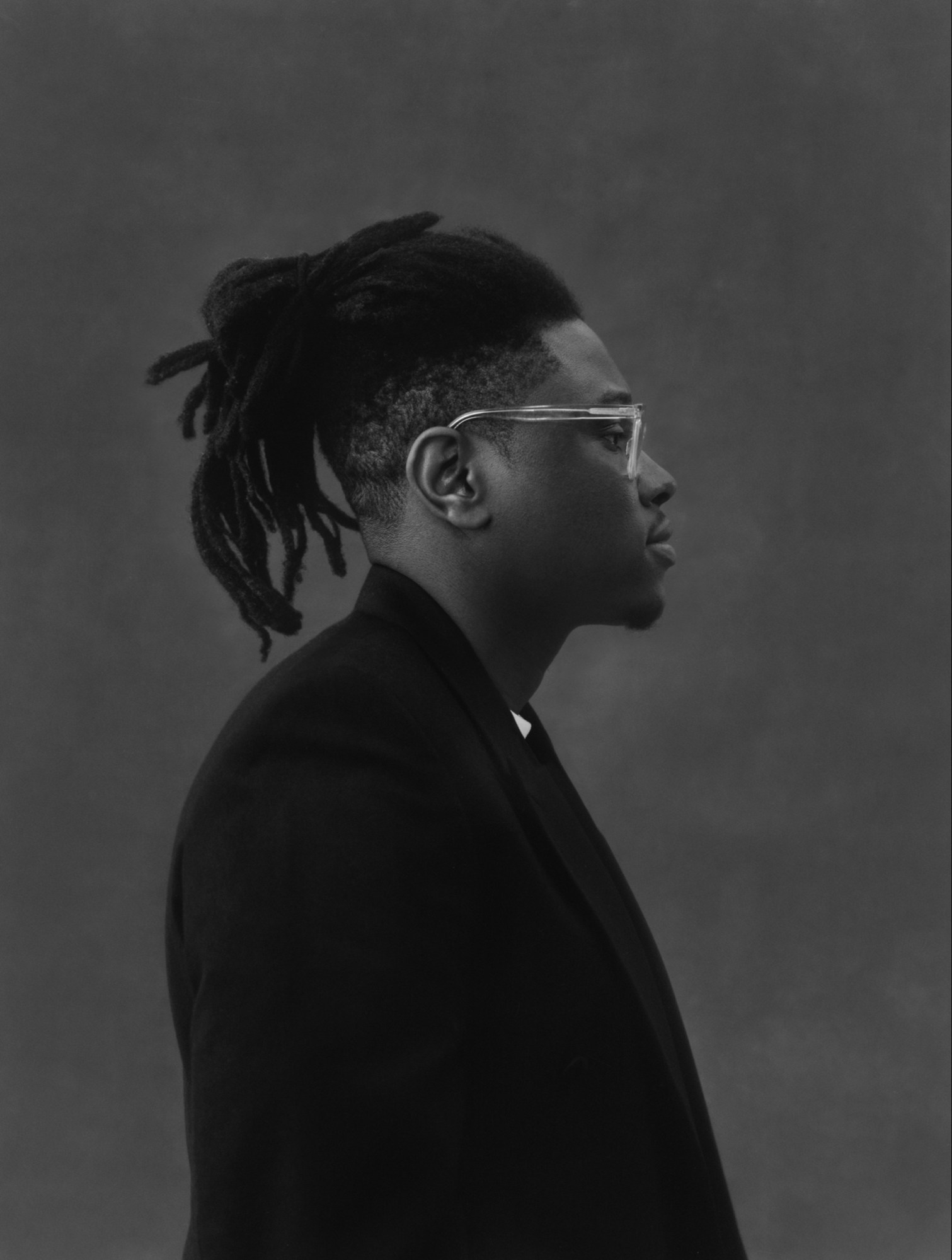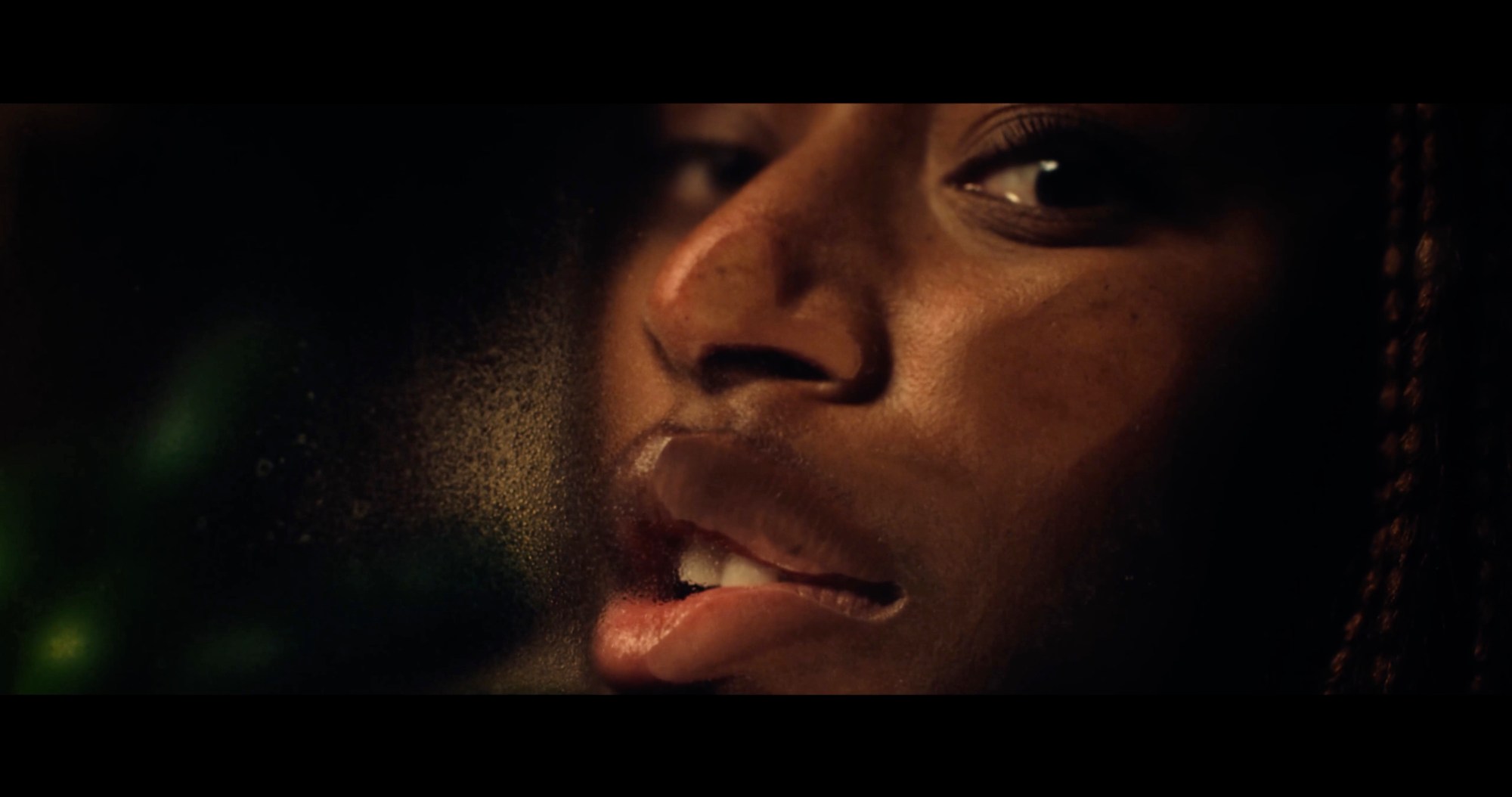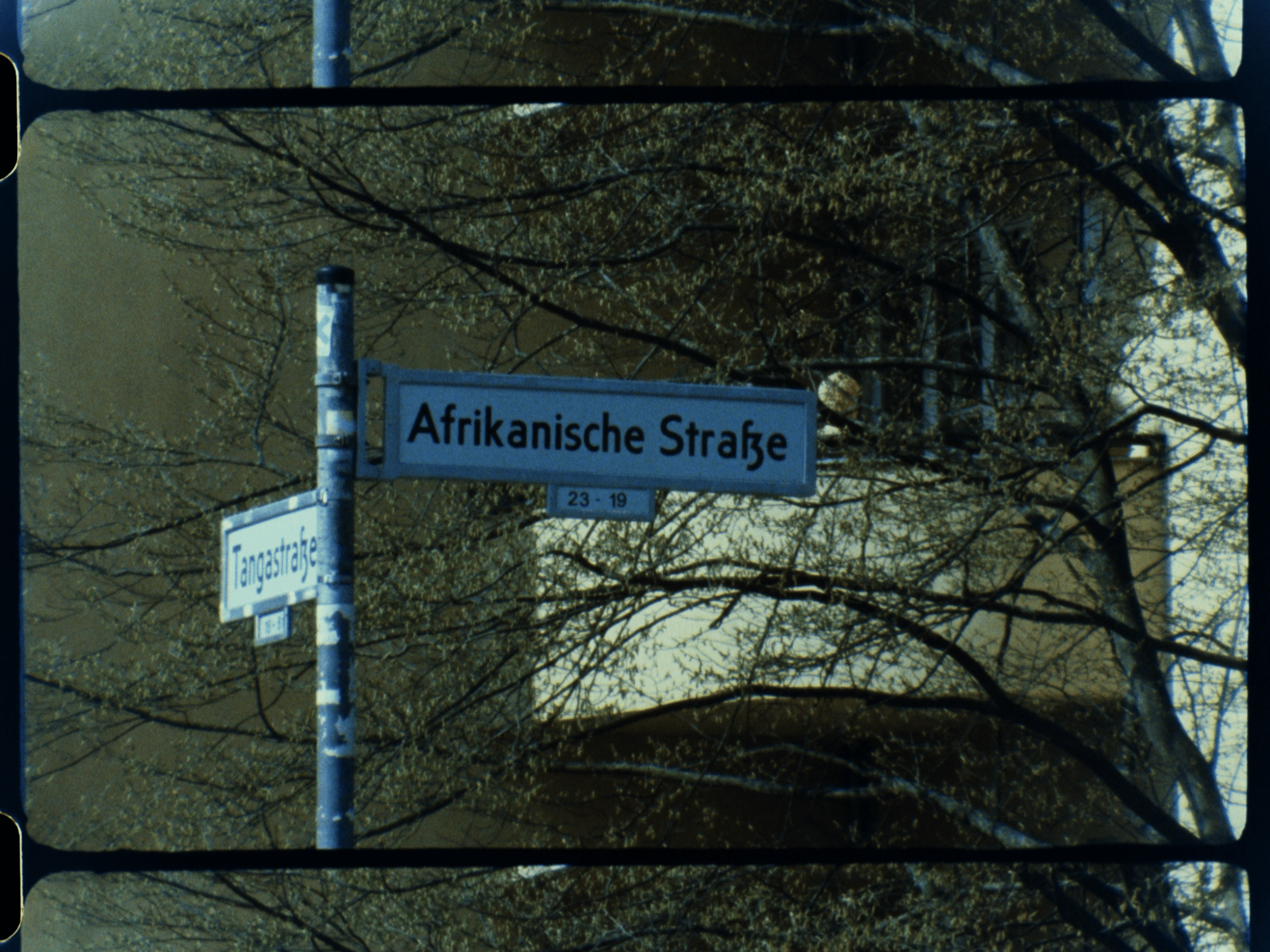Julianknxx resists definition. The London-based artist has been called a poet archivist, a filmmaker and a storyteller — but if it was up to him, he would let each of his endeavours speak for themselves. “I make my work out of necessity,” he says. “If it needs to be projected, then it will be projected; if it needs to be on the page, it will be on the page.”
Julian Knox, known professionally as Julianknxx, is currently debuting his most public exhibition yet, Chorus in Rememory of Flight, at the Barbican Centre’s iconic Curve gallery in London until 11 February 2024.

Co-commissioned by the Barbican and WePresent by WeTransfer in partnership with Calouste Gulbenkian Foundation, the showcase synthesises a year spent capturing testimony and ceremony with Black choirs in seven European port cities. The project comprises a series of films, scored by choral music and Julian’s spoken poetry. Guiding viewers through a multi-screen installation, he explores throughlines that draw together Black stories from around the world and across the diaspora.
Julian immigrated from Sierra Leone to the UK at a young age, his home country in the throes of an 11-year civil war. This experience of displacement and early confrontation with colonisation, race and belonging informs the installation and Julian’s artistic practice as a whole. His perspective on diaspora narratives is rooted in African art, history and culture. With Chorus in Rememory of Flight, Julian examines the relationship between identity and place, challenging the impulse to draw neat boundaries around what one considers home.

Filming in Hamburg, Rotterdam, Antwerp, London, Marseille, Barcelona and Lisbon, Julian collaborated with Black choirs to document shared histories through communal song. “I don’t think about my identity as being separate from nature,” he says (alluding to a particular experience in Amsterdam visiting “The Tree That Saw Everything”). “Nature is unruly, it always changes; and that allows for me to also change and grow.” Since this is Julian’s first solo show, he had new freedom to stretch his craft. He experimented with different ways of layering visuals and choosing what appeared as text or sound to construct what became the journey through the gallery.
As visitors first enter The Curve, they are surrounded by the rhythmic thrumming of a group vocal warmup — an invitation to participate actively in the space. Each film is presented as if floating, waiting to be met. The cinematic aesthetic mixes confrontational energy with playfulness, welcoming the audience in with palpable generosity. The variety in visual style and landscape, overlain by poetry and music, could feel cacophonous; but it instead feels true to life. Julian’s handling of different disciplines, geographies and languages reflects his signature defiance against category. The less he’s constricted by labels, the closer he can get to truth.

One guiding question in designing the exhibition was “How can this place hold a poem?” Julian wanted to architect a “space of encounter”, where text, visuals and music feel engaged with full humanity.
He describes an interaction with a chorus member in Berlin, who told him: “If you don’t go into the process of unlearning racism, you might miss the love of your life.” It’s clear that love was imbued in the process of building this exhibition. Though at its heart it interrogates a past scarred by fear and violence, Chorus in Rememory of Flight swells with undeniable hope and joy. “I want to retain beauty in a world that speaks on suffering,” Julian says. “Trying to hold all the care and love that these people offered me.”

If the work ultimately chooses its own medium, this one chose well on the index of emotional dimensionality. Communal singing as a practice inherently induces feelings of elation and transcendence. There’s even a name for the psychological phenomenon — collective effervescence — the rousing energy people feel when they come together around a shared and embodied purpose. Part of what makes Julian’s work so affecting is his ability to translate that gut-level sensation for the audience as well.
“Black people have always used songs as a way of soothing themselves, passing on stories, and celebrating,” he explains. “You don’t have to be an amazing singer, you can just join in. And if you miss a beat or you’re tired, the rest of the group will carry you.”

He may not have a concise answer when pressed to explain what he does for work, but Julianknxx demonstrates that embracing the liminal is the only path to harmony. “When you look at human histories, it’s clear that we use music as a way of calming the heart,” he says. “I think that plays a big part in this work — seeing how people sing together to hold space for each other… I guess it’s cliché, but in a way we’re all singing from the same hymn book.”
Chorus in Rememory of Flight is open at London’s Barbican Centre until 11 February 2024. A shorter version, along with additional content highlighting stories from Julianknxx’s travels, is available online via WePresent.



Credits
All images courtesy of Julianknxx and Barbican Centre.
